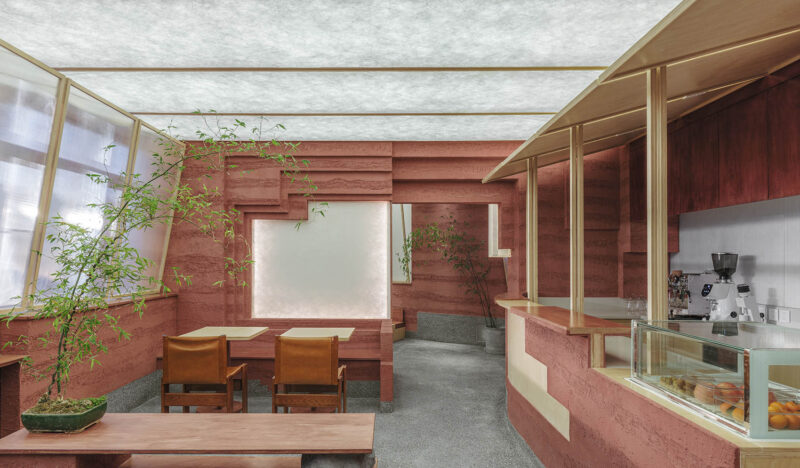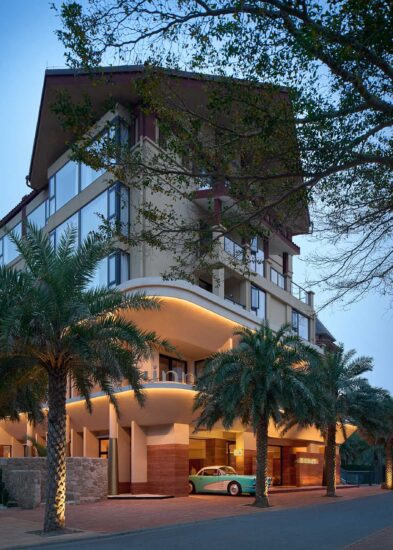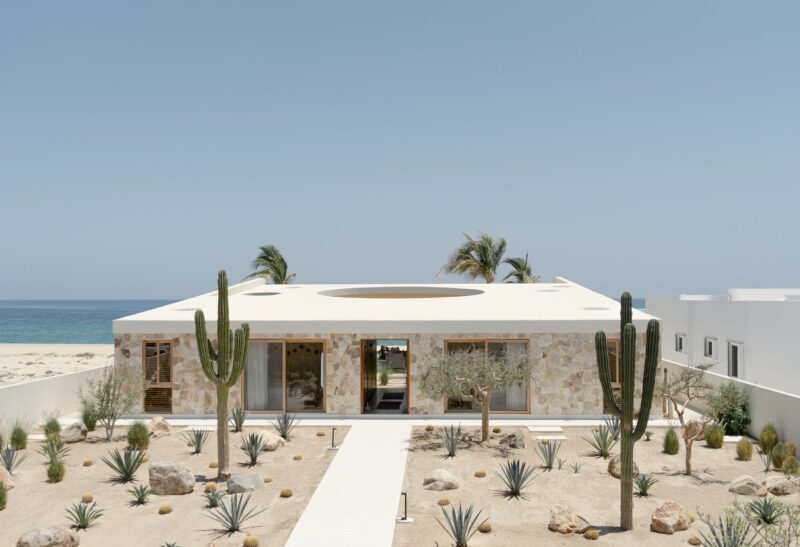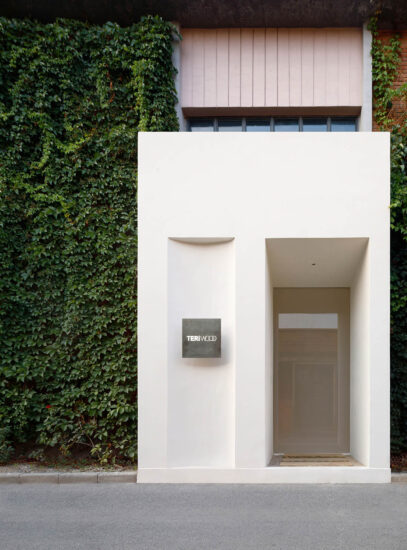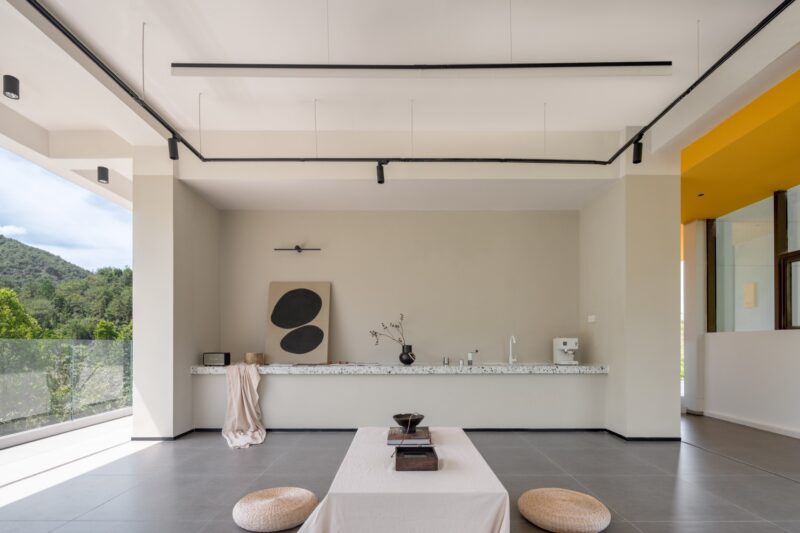后院·溜石港位于北京市西北方位,昌平区流村镇溜石港村。这里的村落盘山而居,四面被大山环绕,素有“京师之枕”的美称。
The Rareyard · Liushigang is located in Liushihgang Village, Liucun Town, Changping District, northwest of Beijing. The village here is surrounded by mountains on all sides and is known as the “pillow of the capital”.
∇ 溜石港村全景,四面环山
Panoramic view of Liushigang Village, surrounded by mountains on all sides
∇ 溜石港村庄肌理
Texture of Liushigang Village
基地的位置在整个村落的最东侧,其东、西、北侧均有民宅包围,南侧一面作为景观延展面,连绵起伏的山脉一字排开,是北京郊区罕见的壮美风景。整块场地由两块相邻的宅基地构成,宽33米,长28米,边缘呈不规则形状。
The location of the base is on the easternmost side of the entire village, surrounded by residential houses on the east, west, and north sides. The south side serves as a landscape extension, with rolling mountain ranges arranged in a row, making it a rare and magnificent scenery in the suburbs of Beijing. The entire site consists of two adjacent homesteads, 33 meters wide and 28 meters long, with irregular edges.
∇ 村落情况及基地位置
Village situation and base location
建筑的形成—顺势而为
ARCHITECTURE — FOLLOW THE LANDFORM
项目原址均为上个世纪60、70年代传统的老北京三合院样式,两个地基之间有着1.5m的高差,为了保证地块的连贯性,我们摒弃了以往在原有老宅基础上改造的设计模式,改为完全新建。
The original site of the project is in the traditional style of an old Beijing courtyard from the 1960s and 1970s, with a height difference of 1.5 meters between the two foundations. In order to ensure the continuity of the plot, we have abandoned the previous design mode of renovating the existing old house foundation and replaced it with a completely new one.
如何最大的利用景观面、填补高差、满足北京宅基地房屋的建设要求以及划分两个宅基地的产权,形成了本案的几个关键要素。
How to make the most of the landscape, fill the height difference, meet the construction requirements of Beijing’s homestead houses, and divide the property rights of the two homesteads have formed several key elements of this case.
∇ 基地原貌
Original appearance of the base
两个地块分别被命名为6号院(西侧)和7号院(东侧),我们将7号院原有的地面进行整体填充,使其与6号院地坪等高,也为后来的围合型院落创造了条件。
Two plots were named as Courtyard 6 (west side) and Courtyard 7 (east side) respectively. We filled the original ground of Courtyard 7 as a whole, making it the same height as the floor of Courtyard 6, and creating conditions for the later enclosed courtyard.
∇ 基地现状,7号院填补地坪
Current situation of the base, filling the floor of the 7th courtyard
因所有的景观视觉都集中在基地南侧,另外三侧都需要视线遮挡,考虑到每一间客房都能有独特景观营造,在建筑设计的过程中,除了对外最大限度的引入南侧的山景景观,对内则构建中心庭院,依照这样的划分逻辑,最终形成了一个向南开口的凹字型围合建筑空间。
Due to the fact that all landscape visuals are concentrated on the south side of the site, and the other three sides require line of sight obstruction, considering that each guest room can have a unique landscape creation, in the process of architectural design, in addition to maximizing the introduction of the mountain view on the south side to the outside, a central courtyard is constructed internally. According to this division logic, a concave shaped enclosed building space with a south opening is ultimately formed.
∇ 建筑整体向南看山
The overall building looks south towards the mountains
此处内容需要权限查看
会员免费查看








